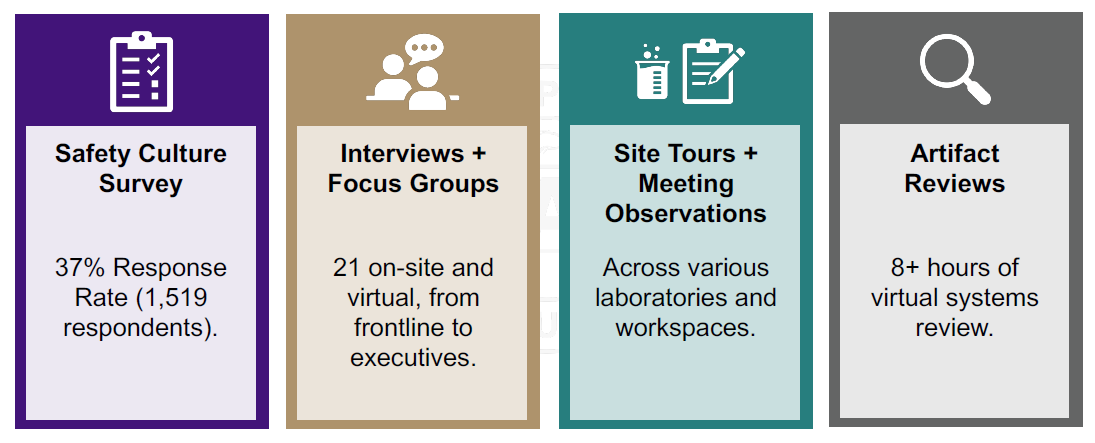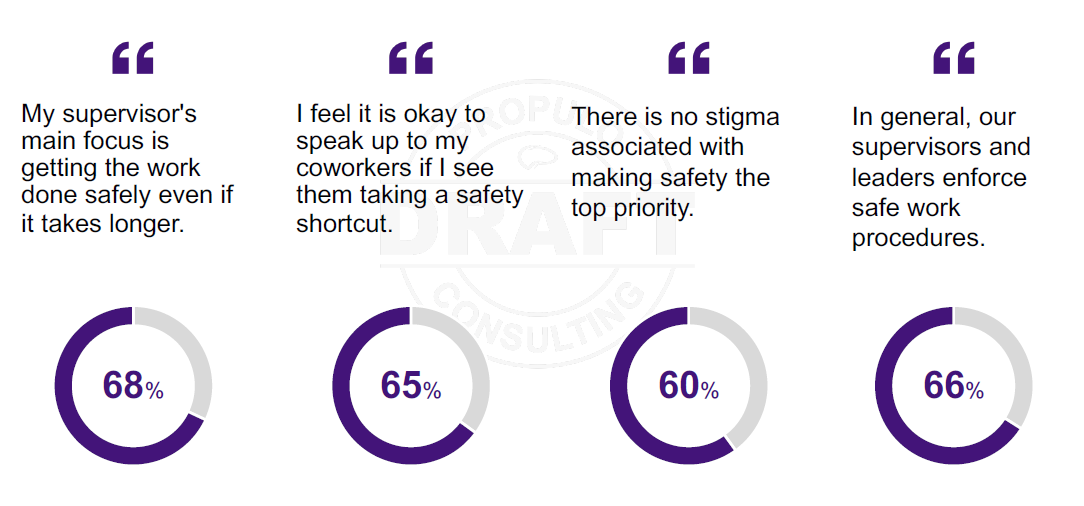Culture of Safety Survey
The University of New Mexico is committed to the safety of everyone on campus, including students, faculty, staff, and visitors. In a proactive effort to assess and enhance the culture of safety, the Environmental Health and Safety Department undertook an audit of occupational safety culture with the assistance of Propulo Consulting.
The audit began with a digital survey in October of 2023, targeting units with the highest occupational risk including research labs and facilities groups. Focus groups, leadership interviews, work practice observations, and documentation reviews followed. The results revealed a positive baseline on which to build a stronger culture of safety across UNM.
Encouragingly, large majorities agreed that UNM is capable of making positive changes to the safety culture and expressed willingness to contribute to such efforts. Additionally, a majority acknowledged the need for improvements in UNM’s safety culture. Respondents identified supervisors, lab managers, and peers as prioritizing safety in their work, a solid foundation to build upon.
Where we started:

What did we learn?
Strengths:
The University of New Mexico, like most institutions, has its strengths and areas for improvement. The survey highlighted several key strengths that provide a good foundation for making improvements:
- Lab managers and supervisors are prioritizing safety.
- There is strong peer support and coaching among students and staff.
- EHS is willing to commit to helping the campus community improve the Culture of Safety.
- 70% of the people surveyed are willing to help implement changes to improve the safety culture.

That being said, UNM scored low on the maturity rating; i.e., the difference between the "we have to have safety because it's required by law" versus the "we want to have safety to promote the well-being of our employees".

Recommendations:
From the Culture of Safety Audit, we have the above recommendations that were found can help UNM increase its Culture of Safety that was based on the following findings:
- Getting Senior Leaders Involved in Safety
Less than a third (29%) of all university stakeholders believe university leadership spends enough time amongst the campus community to understand real safety issues. Stakeholders perceive limited communication or coordination between safety committees and even less involvement from senior leaders.
University stakeholders believe senior leaders do not provide adequate resources for ensuring laboratory or facility safety.
- Translate Spoken Commitment into Organized Action
Less than a third (29%) of all university stakeholders believe university leadership spends enough time amongst the campus community to understand real safety issues.
Stakeholders perceive limited communication or coordination between safety committees and even less involvement from senior leaders.
University stakeholders believe senior leaders do not provide adequate resources for ensuring laboratory or facility safety.
- Establish Safety Leadership Accountability
There is no consistent mechanism for holding faculty, PIs, and other management personnel accountable for managing the safety of their work groups.
There appear to be insignificant consequences for faculty who repetitively ignore safety concerns.
- Improve Risk Perception and Awareness
There is significant variability in the understanding and application of existing safety practices. The extent to which individuals engage in personal safety strategies, such as wearing personal protective equipment, engaging in safe behavior, and exercising caution towards danger, is highly variable.
For the full reports of what was found, please see:
Where do we go from here?
For more information on upcoming surveys, progress reports, and future information please see the Culture of Safety News section!
